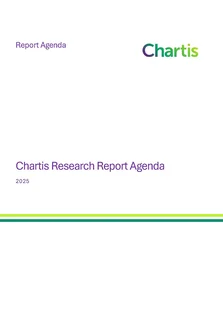More Than Just Policy: Effective Model Risk Management in a New Age
This report – a collaborative publication from Chartis and ClusterSeven – examines a crucial period of activity for MRM users and sellers. It considers what MRM now means in a post-IFRS 9/CECL world, and how FIs can develop effective MRM solutions in this new environment.
Traditionally, model risk management (MRM) has been an area of relatively low software spend. But this is changing. Demand for third-party MRM systems (particularly in the banking book) is increasing, as more sophisticated models spread across the finance industry. Why is this happening now? Because MRM as a discipline is experiencing something of a revolution: a period of accelerated development in which its methods and technologies are rapidly evolving. At one level, specific standards and regulations – notably IFRS 9, CECL and FRTB1 – have brought about a massive boost in the range and variety of available models, and shifted risk managers’ focus back to the area of model inventory management. Alongside this, regulators in Europe and the US have intensified their scrutiny of the mechanisms and frameworks financial institutions (FIs) employ in their new and numerous models. And as the revolution in MRM continues, users of relevant technology need to embrace new methods and tools to utilize and develop it effectively. It is worth noting, though, that different FIs’ experience can vary widely. Many larger US institutions, for example, or those with a large US presence, have undergone several interactions with their respective regulators, and as a result have processes that are considerably mature. Nevertheless, for reasons we lay out in this document, we believe that even these institutions will face significant challenges as the variety and diversity of models increase, and as new challenges emerge in the area of banking-book modeling. Chartis Research has been observing and analysing this market for some time, and believes that the step-change we are seeing represents a crucial period of activity for MRM users and sellers. In this report – a collaborative publication from Chartis and ClusterSeven – we examine the nature of MRM: what it means in a post-IFRS 9/CECL world, and how FIs can develop effective MRM solutions in this new environment.
Only users who have a paid subscription or are part of a corporate subscription are able to print or copy content.
To access these options, along with all other subscription benefits, please contact info@risk.net or view our subscription options here: http://subscriptions.risk.net/subscribe
You are currently unable to print this content. Please contact info@chartis-research.com to find out more.
You are currently unable to copy this content. Please contact info@chartis-research.com to find out more.
Copyright Infopro Digital Limited. All rights reserved.
As outlined in our terms and conditions, https://www.infopro-digital.com/terms-and-conditions/subscriptions/ (point 2.4), printing is limited to a single copy.
If you would like to purchase additional rights please email info@chartis-research.com
Copyright Infopro Digital Limited. All rights reserved.
You may share this content using our article tools. As outlined in our terms and conditions, https://www.infopro-digital.com/terms-and-conditions/subscriptions/ (clause 2.4), an Authorised User may only make one copy of the materials for their own personal use. You must also comply with the restrictions in clause 2.5.
If you would like to purchase additional rights please email info@chartis-research.com



